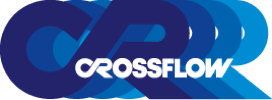Industrial Ventilation
Crossflow with the years of experience that lies behind the organization, can provide the design, supply and installation of systems that will provide solution for a wide range of Hazardous and non hazardous applications
- Hazardous fume extraction (at source) solutions
- Hazardous Dust and filtration (at source) solutions
- ATEX approved fixed filtration and extraction system
Fume Extractors for Pharmaceutical and Medical Applications
A variety of processes in the pharmaceutical and medical industries can produce fumes, dust and bacteria which are harmful to health if inhaled. For example:
- Tablet manufacturing
- Chemical production
- Medical procedures such as laser surgery
- Research and laboratory work
- Laser marking (date and batch coding)
- Medical waste storage
- Powder handlin
NEX S is approved for zone 21/1 (dust and gas) in accordance with the ATEX directive 94/9EC, Group II, equipment category 2.
- As of July 2006, organisations in EU must follow the directives to protect employees from explosion risk in areas with a explosive atmospheres. There are two ATEX directives:
- the ATEX 95 equipment directive 94/9/EC, Equipment and protective systems intended for use in potentially explosive atmospheres;
- the ATEX 137 workplace directive 99/92/EC, Minimum requirements for improving the safety and health protection of workers potentially at risk from explosive atmospheres.
Fume extractors for welding fume and grinding dust
The high temperature generated when welding or grinding material can produce hazardous fumes and dust.
These fumes can cause occupational asthma, long term carcinogenic diseases and other serious complaints. The result of these illnesses can be expensive compensation claims from employees, long term sickness and poor employee relations, plus heavy penalties from enforcement agencies.
Fume from welding, flame cutting and other ‘hot work’ varies greatly and may cause dryness of the throat, tickling, coughing, tightness of the chest and difficulty in breathing. Long- term changes in the lung are possible. Harmful fumes and gases during welding in the automotive industry include those from primer and paint layers, other surface coatings such as underseal, and from lead in car bodies. Activities that produce harmful fumes include:
- Oxy-gas welding and brazing
- Manual metal arc (MMA) or stick welding
- Metal inert gas (MIG) and metal active gas (MAG) welding
- Tungsten inert gas (TIG) welding
- Flux-cored arc (FCA) and metal-cored arc (MCA) welding
- Resistance (spot) welding
- Gas and oxy-gas cutting
- Arc-plasma cutting
- Arc-air gouging (air-carbon arc gouging)
- Pressure blasting
- Grinding
More Harmful Dusts – Body Filling/Preparation
Most body fillers are reinforced with glass fibre or metal and consist of a thermosetting polyester in a solvent (usually styrene) which is hardened by a catalyst. All work with such fillers generates toxic fume and dust; the catalyst is often a corrosive irritant and some are strong skin sensitizers causing dermatitis.
Lead is sometimes used in body preparation work and finishing operations can release high concentrations of fine dust which is a serious health hazard.
The soldering process itself can produce some, if not all, of the following fumes:
- Soldering by Hand
- Carbon Monoxide
- Volatile Organic Compounds (V.O.C)
- Abietic Acid
- Pimaric Acid
- Aliphatic Aldehydes
- Hydrochloric Acid
- Isocyanates
- Isopropyl Alcohol
These fumes can cause occupational asthma, long term carcinogenic diseases and other serious complaints. The result of these illnesses can be expensive compensation claims from employees, long term sickness and poor employee relations, plus heavy penalties from enforcement agencies.
Crossflow Solution
Crossflow offer a wide variety of machinery to safely and effectively extract and filter harmful fumes, dust and bacteria. The fume extractors are easy to clean and are manufactured from corrosion resistant stainless steel, many machines are also IP56 rated to allow hose down cleaning.
Free Site Survey
After initial consultation Crossflow engineers can visit a site free of charge to carry out a survey and to suggest suitable designs and solutions.



